After building a top bar bee hive a couple of years ago or so, with the drought last year, I figured then wasn’t the time to try to start a bee colony. But, after the winter rains we had, I became hopeful for this year; and so, I ordered a package of bees from R Weaver Apiary in Texas. I decided to purchase the standard Italian bees, and have the queen marked (so we could track her more easily) but with her wings not clipped, as I read that it’s possible the colony can interpret the clipped wings as damage to the queen, for which they will kill her and make a new one.
Beforehand, I had to decide on and prepare a location for them. I wanted somewhere in the wooded area farther from the open fields and the cold north winter winds, under oak trees for summer shade, with hopefully a view of the southern sky for possible winter sun; and then I wanted to fully enclose them in so as to further protect them from winter north winds and also various animals (like our cattle and also, hopefully, harmful critters).
And so, here is the location I ended up choosing, shown after clearing some of the underbrush:
And here it is with the post holes for the fence dug:
I decided to use treated wood around, including the fence slats (which I chose for maximum wind protection); and here is the beginning of assembling the first wall. After measuring for and attaching the cross-piece 2x4s, I squared the “box” from corner to corner before adding the third cross piece in the center:
And here it is complete:
And standing:
Here is the second wall:
And the third wall:
And the fourth, half wall. In order to line up the fence slats next to each other, it was necessary to use bar clamps to bend over one end after securing the other end; and here I’m using the clamp in the middle to bring the fence slats together before securing them to the cross piece. For the longer walls, I had to string several bar clamps together:
And here is that fourth wall raised:
In the original design for the top bar bee hive, if I interpreted correctly the instructions for the false back, which is used to keep the bees in a smaller area in the hive, particularly during the winter so they can stay warm more easily, I cut the bottom of the false back up 1/2″ from the bottom of the hive. After thinking about it, that didn’t quite make sense to me if using the false back in back of the hive, because the bees could get under it and go to the empty part of the hive that had no exit. And so, to create a true false back, I tacked on that extra 1/2″ piece. After considering it more though, I suppose I could move the bees to the back (which seems to be where they naturally want to go), and use the false back as a false front by removing the 1/2″ extension, which would allow them access to the empty front area, and thus the hive entrance. But for now, I’m not sure which way it will go; but the extension is removable if need be:
One thing I didn’t consider with the false back was it fitting in the middle of the hive, given that I did not embed into the wood the plexiglass window I installed. And for that, I had to notch out the side of the false back:
I decided to place the top bar bee hive on sawhorses, using them as a stand, to get them off the ground and keep the entrance “suspended” in mid air, thus hopefully making it harder for little critters to get to the entrance:
And I “tied” the bee hive legs to the sawhorses using plummer’s tape:
Here is the bee area fenced in with the door hung and closed:
And then with the door open:
And here are the delivered bees!
After donning the folding bee veil (something I read suggested a folding veil was easier to store away) I purchased from Weaver, which slides over a hat (I’m using a hard-hat helmet now, which works better and doesn’t deform my straw hat), putting on some gloves and taping the wrists closed, and spraying the bees in the package with sugar water (which I read distracts them and calms them very well), I took the bee package box, “clunked” it on the ground one time (I read doing it multiple times can disturb the bees more) to get them all to the bottom of the box, and went in and placed the bee package in the hive:
After trying to figure out how it was all put together (I thought the top of the honey water can was just a lid), I removed the honey-water can using my knife to slide it up slightly but enough to grab it with my fingers:
And then removed the queen cage:
I had heard to hang the queen cage between two top bars, and so I taped the little cage “handle” to one of the top bars:
And here are the bees in their package box in the hive, moving in to their new digs:
And then I replaced the missing bars and carefully closed the hive by trying to sweep the bees out of the way with my hand.
The next day, I went back and opened the hive to see how the queen was progressing in being released from the cage. There is apparently a candy plug that the bees eat away eventually to release the queen, but in my ignorance, figured it would only take a day, having since learned it can apparently take longer. At any rate, I had read that some people poke holes through the candy plug to help along the process, and had decided to do that if the queen was still in her cage, which she was. I brought an awl with me, began trying to push it through, and it popped the whole candy plug into the cage, and here came queenie waltzing out onto the top of the top bars. Uh oh…panic! She flew into the air, but then I found her again on top of the top bars, with other bees surrounding her; and I quickly took the small sweeping brush I had brought, and tried to sweep her and cluster of “attendants” into the bee hive through the space of one of the top bars I had removed. At the time, I thought I had swept them in; and so, I closed everything up and hoped and prayed that I had and for the best of the situation.
After doing a little more study, that bees could just abscond (leave) the hive for whatever reason, even after several days; and after watching a video on tips for installing new bees, I dropped in a few drops of food-grade lemongrass essential oils into the hive, as apparently bees perceive the smell of lemon as home. I also took the remaining honey water and put it in a little bowl on the ground with lots of twigs in it, especially ones leaning against the brim going into the water, so the bees would have something to stand on, as they can drown in open water.
Well, over the next several days, it appeared I did get the queen in there, as there was a continuous large cluster of bees in the back of the hive; and, after about two weeks, here are the bees congregating in the front:
And after a about three weeks, here is the progress!
We are grateful to the Lord for the example of these busy workers, and we pray we manage well these little well-ordered creatures, so we have more pollinators around, and for honey eventually for food preservation (and a little sweetener!), for His glory and the benefit of His Church.
— David
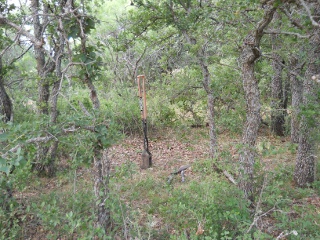
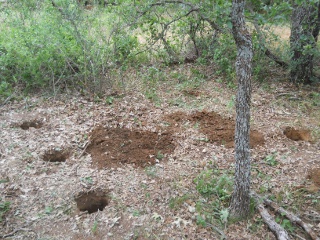
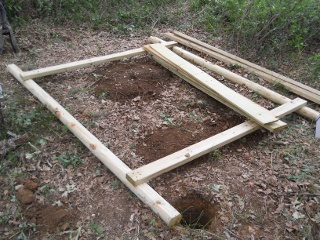
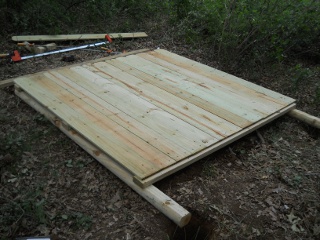
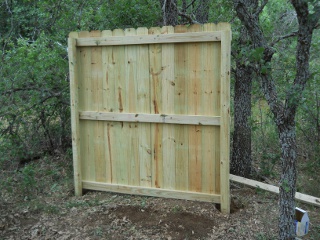
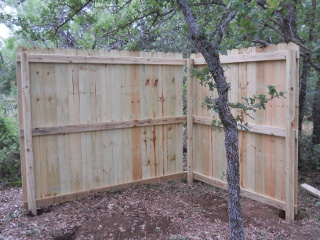
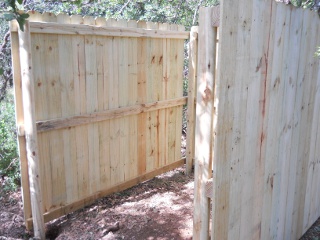
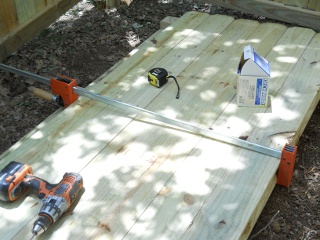
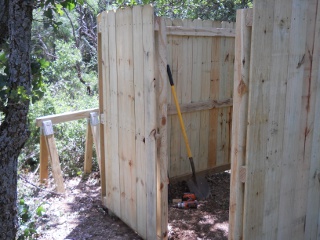
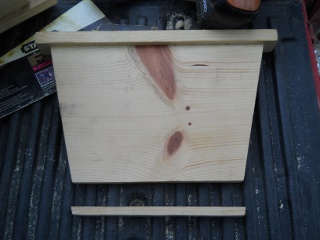
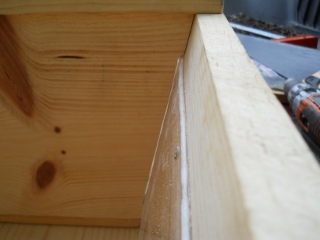
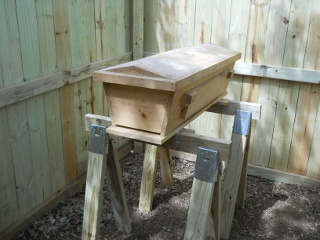
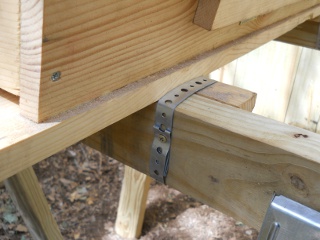
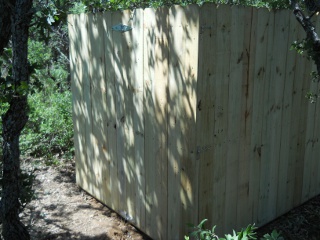
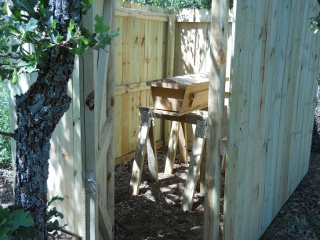
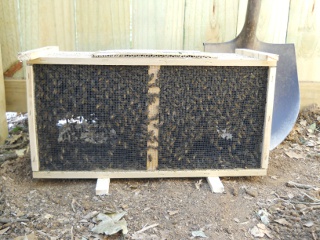
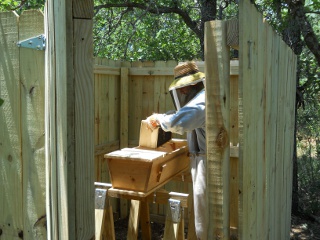
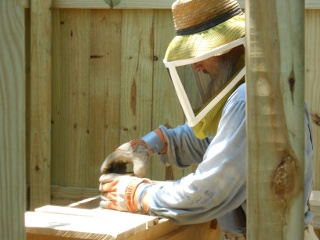
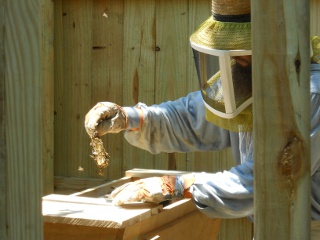
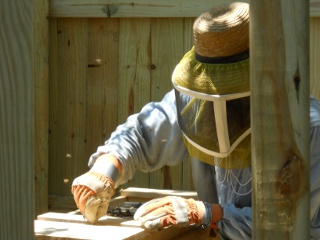
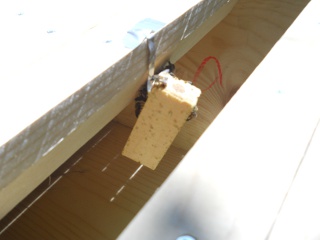
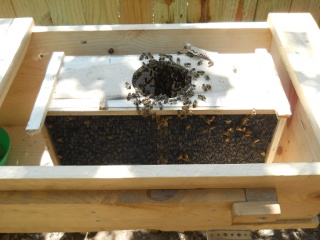
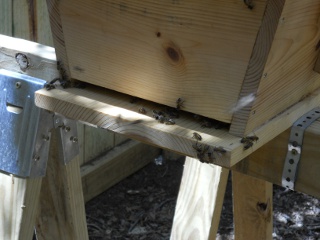
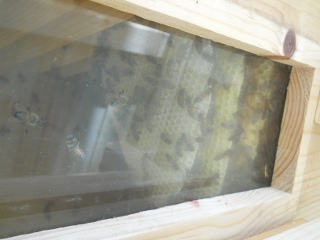
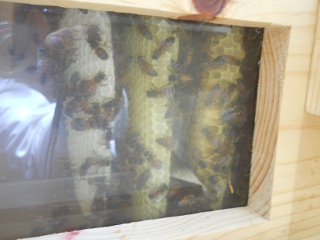
Wow looks great. Here is a link to my bee man: http://naturesnectar.blogspot.com/. He is geared more to box hives but his blog is very interesting. Lots of good stuff in the archives. God bless the bees!
Kris
My bees showed up last week. Out of Kentucky. Wasn't happy with the way they arrived (UPS 2 day) but they're intact.
I use the more traditional Langstroth hives and haven't had problems except in the more brutal Illinois winters. I'm hoping that down in Texas I'll have less problems with that.
I hope God shines on your beekeeping endeavors. It's one of the most rewarding agricultural things I do and I hope it is so for you as well.
David,
Your post was very interesting to me. My husband recently bought me a hive for my birthday as I have been wanting to get bees for a while now. He wanted to surprise me so didn't ask what I would like, but I'm happy with my new hive. It is a regular 10 frame with 2 supers. I think I will wait until spring to get bees as it is a little late in the season this year. Good luck!
Thank you all for your comments, information, and best hopes and blessings! (sorry Manette, we don't believe in "luck", in light of God's sovereignty — no offense taken 🙂 )
— David